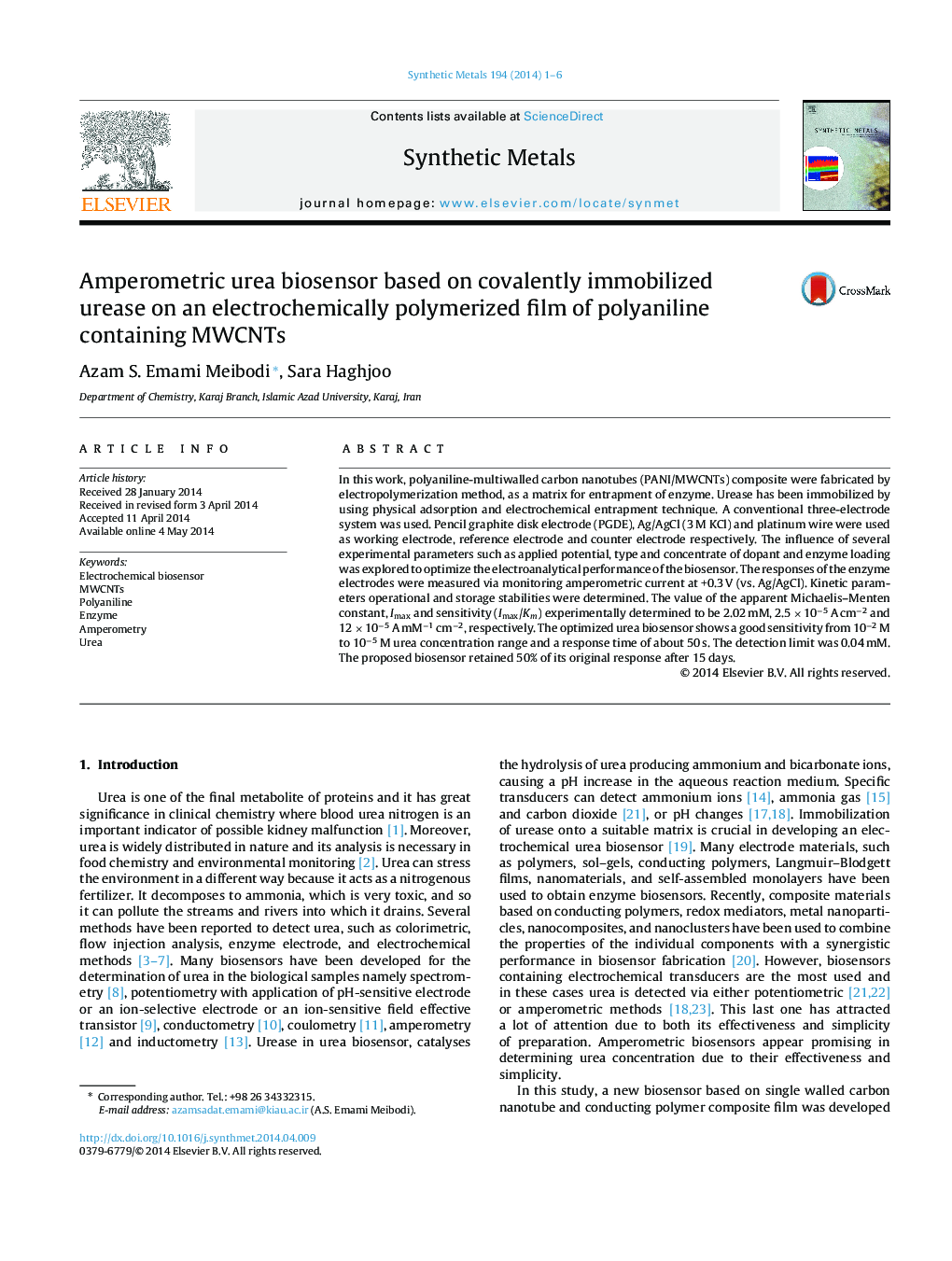| Article ID | Journal | Published Year | Pages | File Type |
|---|---|---|---|---|
| 1440858 | Synthetic Metals | 2014 | 6 Pages |
•Polyaniline-multiwalled carbon nanotubes composite were fabricated by electropolymerization method.•Polyaniline-multiwalled carbon nanotubes composite was used as a matrix for covalently immobilization of urease.•Amperometric response of modified electrode was measured as a function of urea concentration.
In this work, polyaniline-multiwalled carbon nanotubes (PANI/MWCNTs) composite were fabricated by electropolymerization method, as a matrix for entrapment of enzyme. Urease has been immobilized by using physical adsorption and electrochemical entrapment technique. A conventional three-electrode system was used. Pencil graphite disk electrode (PGDE), Ag/AgCl (3 M KCl) and platinum wire were used as working electrode, reference electrode and counter electrode respectively. The influence of several experimental parameters such as applied potential, type and concentrate of dopant and enzyme loading was explored to optimize the electroanalytical performance of the biosensor. The responses of the enzyme electrodes were measured via monitoring amperometric current at +0.3 V (vs. Ag/AgCl). Kinetic parameters operational and storage stabilities were determined. The value of the apparent Michaelis–Menten constant, Imax and sensitivity (Imax/Km) experimentally determined to be 2.02 mM, 2.5 × 10−5 A cm−2 and 12 × 10−5 A mM−1 cm−2, respectively. The optimized urea biosensor shows a good sensitivity from 10−2 M to 10−5 M urea concentration range and a response time of about 50 s. The detection limit was 0.04 mM. The proposed biosensor retained 50% of its original response after 15 days.
Graphical abstractFigure optionsDownload full-size imageDownload as PowerPoint slide
